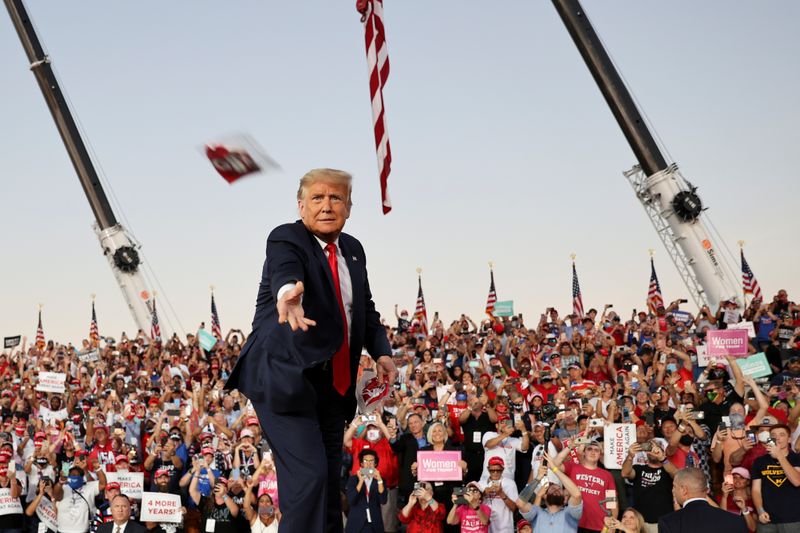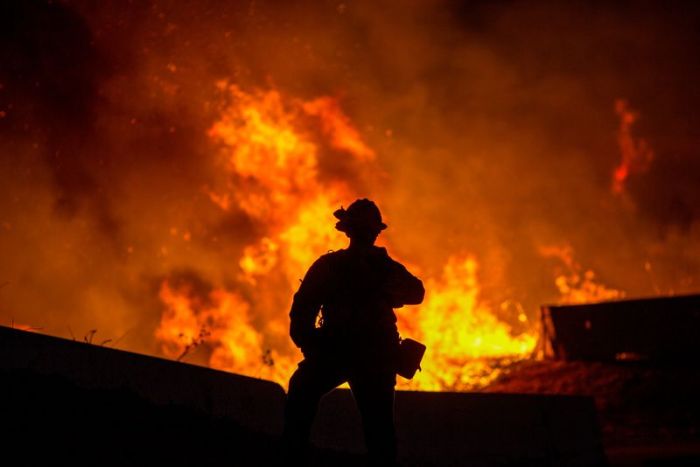(Reuters) – In the early days of what became a historic public health crisis, the novel coronavirus was, in the lexicon of U.S. politics, a “blue state” problem – centered in East and West Coast areas, particularly New York and New Jersey, that voted against President Donald Trump in 2016.
It remained so for weeks, and that fact defined what became battle lines between mask wearers and skeptics, and between those convinced restrictions on commerce were needed to save lives versus those who wanted less government intervention.
Now, though, it is squarely a “Trump country” issue.
Trump trails in opinion polls ahead of the Nov. 3 election, partly on the basis of his handling of a pandemic that saw him feuding with state governors, questioning government scientists, and hesitant to frame a national response to a crisis that easily spread across state lines. He refused to change course even after catching the disease himself and requiring hospitalization.
For a while in the spring it looked like the hands-off approach might work. The daily growth in new cases declined in the hard-hit Northeast corridor, while remaining level in the Trump states of the South and Midwest.
(GRAPHIC: Coronavirus infections in red and blue, https://graphics.reuters.com/USA-ECONOMY/COVID/nmopaydezpa/)
But when summer arrived, and places started lifting restrictions, that brief moment of control also ended. So did the virus’s focus in blue state America. By midsummer outbreaks spread in the South before moving this fall into the heart of Trump’s base in the industrial Midwest.
The gap in case growth narrows somewhat when adjusting for population by looking at numbers of new infections for each million people.
Nonetheless, the newest surge in the outbreak remains most intense in “Trump country.”
(GRAPHIC: Weekly new coronavirus cases per million, https://graphics.reuters.com/USA-ECONOMY/COVID/xklvymbxnvg/chart.png)
Some argue that case numbers can be inflated by the accessibility or use of testing.
Still, the Trump states also have closed the gap when it comes to deaths.
Blue America has still experienced more COVID-19 fatalities per million people.
(GRAPHIC: Cumulative coronavirus deaths per million, https://graphics.reuters.com/USA-ECONOMY/COVID/qmyvmjxdqpr/chart.png)
But in early October the Trump states eclipsed the rest of the country in total deaths, and, with a week to go before Election Day, the number of fatalities continues to grow faster in those areas.
(GRAPHIC: Total COVID-19 deaths, https://graphics.reuters.com/USA-ECONOMY/COVID/oakvenjggpr/)
(Reporting by Howard Schneider in Washington; Editing by Dan Burns and Lisa Shumaker)

























